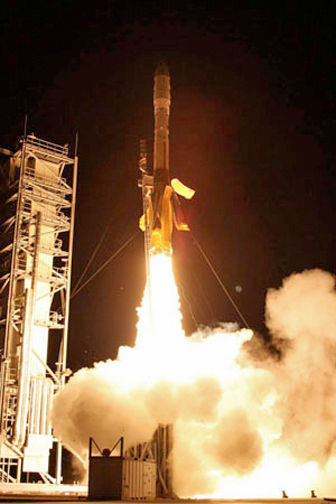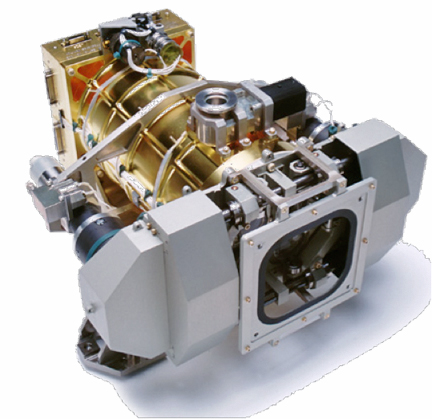
The November 19, 2013, Minotaur 1 launch from Wallops Island, Virginia.
[SatNews] An instrument that measures the sun’s energy output is in orbit after it was launched last night on the U.S. Air Force’s Space Test Program Satellite-3.
The satellite was aboard a Minotaur I rocket that launched at 8:15 p.m. EST from NASA Wallops Flight Facility, Wallops Island, Virginia.
The instrument, called the Total solar irradiance Calibration Transfer Experiment (TCTE), is funded by NOAA’s next-generation Joint Polar Satellite System (JPSS) and designed to continue measurements of the total energy output of the sun. These measurements are used to measure light from the sun at all wavelengths, which is the primary energy source that drives climate on Earth, and determine if solar changes influence the Earth's climate.
TCTE is one of six payloads on the STPSat-3 satellite, which was built by Ball Aerospace & Technologies Corp, in Boulder, Colorado.
“The TCTE instrument is a creative, fast and low cost solution that will maintain and extend the solar energy data record until the launch of the next such instrument,” said Harry Cikanek, JPSS director. “The U.S. Air Force, NOAA and NASA, along with our industry and academic partners, went from an idea to development in a matter of months, and much faster than usual which is notable given the challenges of integrating a new payload on an already designed mission.”
The instrument was assembled by the Laboratory for Atmospheric and Space Physics (LASP) at the University of Colorado, working with the TCTE program office at NASA’s Goddard Space Flight Center in Greenbelt, Md., with a quick turnaround to get the instrument ready to fly on the Air Force satellite. “The resourcefulness and ingenuity of the LASP, NASA and NOAA team in building and integrating the TCTE in such a short period demonstrates responsive engineering at its finest,” said Kevin Carmack, Polar Free-Flyer project manager at NASA Goddard.
The solar irradiance record from space that began in 1978 is currently measured by the Total Irradiance Monitor deployed in 2003 on the Solar Radiation and Climate Experiment (SORCE) mission. While SORCE was designed to last for five years, it is still recording data more than 10 years later, but the aging satellite is nearing the end of its battery life.
“TCTE is a scientific mission that supports the national interest in understanding the solar influence on the Earth climate system. It was great how the importance of this scientific goal was recognized and supported by the governmental organizations NOAA, NASA and the Department of Defense, and implemented by the University of Colorado through LASP and industry by Ball Aerospace in such a cost effective and efficient way,” said Thomas Sparn, TCTE program manager at LASP.

TIM measures the total light coming from the Sun at all wavelengths. It will be integrated in the TCTE payload.
Photo courtesy of LASP.
The TCTE instrument is one of three nearly identical instruments built at the time of the SORCE mission. Because the instrument was already built, it was able to be quickly integrated onto the Air Force satellite with short notice, due to a cancellation of another instrument. TCTE is intended as an interim solution to maintain and extend the data record until the launch of the next measurement mission, the Total Solar Irradiance Sensor (TSIS), aboard NOAA’s Polar Free Flyer, which does not yet have a launch date.
NOAA’s mission is to understand and predict changes in the Earth's environment, from the depths of the ocean to the surface of the sun, and to conserve and manage our coastal and marine resources.

